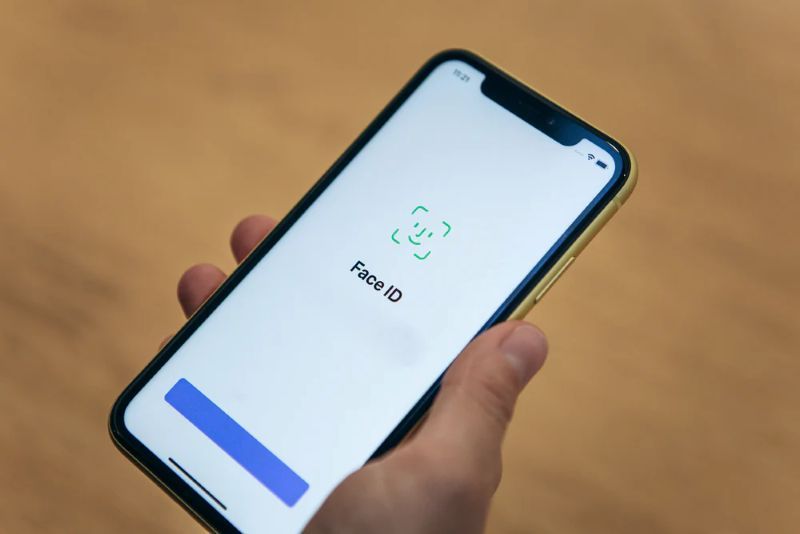

Face ID is a revolutionary feature that has transformed how we unlock our iPhones and authenticate various actions. However, like any technology, it can sometimes encounter issues. Let's explore this topic in more detail with Tiny Fishing below. In this comprehensive guide, we'll delve into the common reasons why Face ID might not be working and provide you with effective solutions to get it back up and running smoothly.
Face ID is Apple's advanced facial recognition technology that uses a combination of sensors and neural networks to create a detailed map of your face. This biometric authentication method offers a seamless and secure way to unlock your iPhone, authorize purchases, and access sensitive information. When it works correctly, Face ID is incredibly convenient and enhances the overall user experience of your iPhone.
However, when Face ID stops working, it can be frustrating and potentially compromise the security of your device. There are several reasons why Face ID might malfunction, ranging from simple software glitches to more complex hardware issues. Understanding these potential problems is the first step in troubleshooting and resolving Face ID issues.
Before we dive into the solutions, it's essential to understand the most common reasons why Face ID might not be working properly. By identifying the root cause, you can apply the most appropriate fix and get your Face ID functioning again quickly.
Many Face ID problems stem from software-related issues. These can include outdated iOS versions, corrupt system files, or conflicts with certain apps. Software glitches can sometimes interfere with the proper functioning of the TrueDepth camera system, which is crucial for Face ID to work correctly.
Another software-related issue could be improper Face ID setup. If the initial face scan wasn't done correctly or under optimal conditions, it might lead to recognition problems later on. Additionally, certain iOS updates might introduce bugs that affect Face ID performance, although these are usually addressed quickly by Apple through subsequent updates.
Read more: How to Hide Photos and Apps on iPhone
While less common, hardware issues can also cause Face ID to malfunction. Physical damage to the TrueDepth camera system, such as a cracked lens or misaligned sensors, can prevent Face ID from working correctly. In some cases, water damage or extreme temperature exposure can also affect the delicate components responsible for facial recognition.
It's worth noting that if you've recently had your iPhone's screen replaced by a third-party repair service, this could potentially impact Face ID functionality. Apple's official repair services are designed to maintain the integrity of the Face ID system, but unauthorized repairs might not always adhere to the same standards.
Now that we've explored the potential causes of Face ID malfunctions, let's dive into the solutions. We'll start with the simplest fixes and progress to more advanced troubleshooting methods. Remember to try these solutions in order, as the issue might be resolved with a simple step without needing to proceed to more complex measures.
Before attempting more advanced solutions, start with these basic troubleshooting steps:
. Ensure your face is clearly visible: Remove any obstructions like sunglasses, masks, or scarves that might be covering part of your face.
. Clean the TrueDepth camera: Use a soft, lint-free cloth to gently clean the front-facing camera and sensors at the top of your iPhone's screen.
. Check your iPhone's positioning: Hold your iPhone at arm's length and ensure it's oriented vertically, not tilted.
. Restart your iPhone: Sometimes, a simple restart can resolve minor software glitches affecting Face ID.
. Check for iOS updates: Ensure your iPhone is running the latest version of iOS, as updates often include bug fixes and performance improvements.
If these basic steps don't resolve the issue, move on to more advanced troubleshooting methods.
If the basic steps didn't solve your Face ID problems, try these more advanced troubleshooting methods:
Reset Face ID: Go to Settings > Face ID & Passcode, enter your passcode, then tap "Reset Face ID." Follow the on-screen instructions to set up Face ID again.
Check Face ID settings: In the same Face ID & Passcode menu, ensure that Face ID is enabled for the functions you want to use it for, such as iPhone Unlock, iTunes & App Store, Apple Pay, etc.
Reset all settings: If resetting Face ID doesn't work, you can try resetting all settings on your iPhone. Go to Settings > General > Reset > Reset All Settings. This won't erase your data, but it will reset all your personalized settings to default.
Update your alternate appearance: If you've significantly changed your appearance (e.g., grown a beard, started wearing glasses), consider setting up an alternate appearance in Face ID settings.
Check for screen protector interference: Some screen protectors can interfere with the TrueDepth camera system. Try removing your screen protector to see if it resolves the issue.
These advanced troubleshooting methods should resolve most software-related Face ID issues. However, if you're still experiencing problems, it might be time to consider the possibility of hardware issues.
If you've exhausted all software troubleshooting options and Face ID still isn't working, you might be dealing with a hardware problem. Here's how to approach potential hardware issues:
Inspect for physical damage: Carefully examine the TrueDepth camera area for any signs of damage, such as cracks or deep scratches. Even minor damage to this area can affect Face ID functionality.
Check for water damage: If your iPhone has been exposed to water or other liquids, it could affect the Face ID sensors. Look for signs of moisture or corrosion around the TrueDepth camera area.
Consider recent repairs: If you've recently had your iPhone's screen or any other components replaced, especially by a third-party repair service, this could potentially impact Face ID. In such cases, it's best to consult with Apple or an authorized service provider.
Contact Apple Support: If you suspect a hardware issue, it's time to reach out to Apple Support. They can run diagnostics on your device and determine if there's a hardware problem that needs to be addressed.
Visit an Apple Store or Authorized Service Provider: If Apple Support confirms a hardware issue, you may need to bring your iPhone to an Apple Store or authorized service provider for repair or replacement.
It's important to note that hardware issues with Face ID often require professional intervention. Attempting to repair these issues yourself could potentially cause more damage and void your warranty.
Read more: Stop iPhone Apps from Tracking You: Quick Guide
While it's helpful to know how to troubleshoot Face ID issues, prevention is always better than cure. Here are some best practices to keep your Face ID functioning optimally:
Keep your iPhone updated: Regularly check for and install iOS updates. These often include improvements and bug fixes for Face ID.
Protect your iPhone: Use a high-quality case and screen protector to prevent physical damage to your device, including the TrueDepth camera area.
Avoid extreme conditions: Protect your iPhone from extreme temperatures and humidity, which can affect its performance and potentially damage internal components.
Clean your iPhone regularly: Gently clean the TrueDepth camera area with a soft, lint-free cloth to ensure nothing is obstructing the sensors.
Update your Face ID data: If you've undergone significant appearance changes, consider resetting Face ID or adding an alternate appearance.
Be cautious with repairs: If your iPhone needs repairs, especially those involving the screen or front-facing cameras, always use Apple or an authorized service provider to ensure the integrity of the Face ID system.
By following these best practices, you can significantly reduce the likelihood of encountering Face ID issues and ensure that this convenient feature continues to work smoothly for you.
Face ID is a powerful and convenient feature that has revolutionized how we interact with our iPhones. While it can occasionally encounter issues, most Face ID problems can be resolved with the troubleshooting steps outlined in this guide. From basic checks to more advanced solutions,